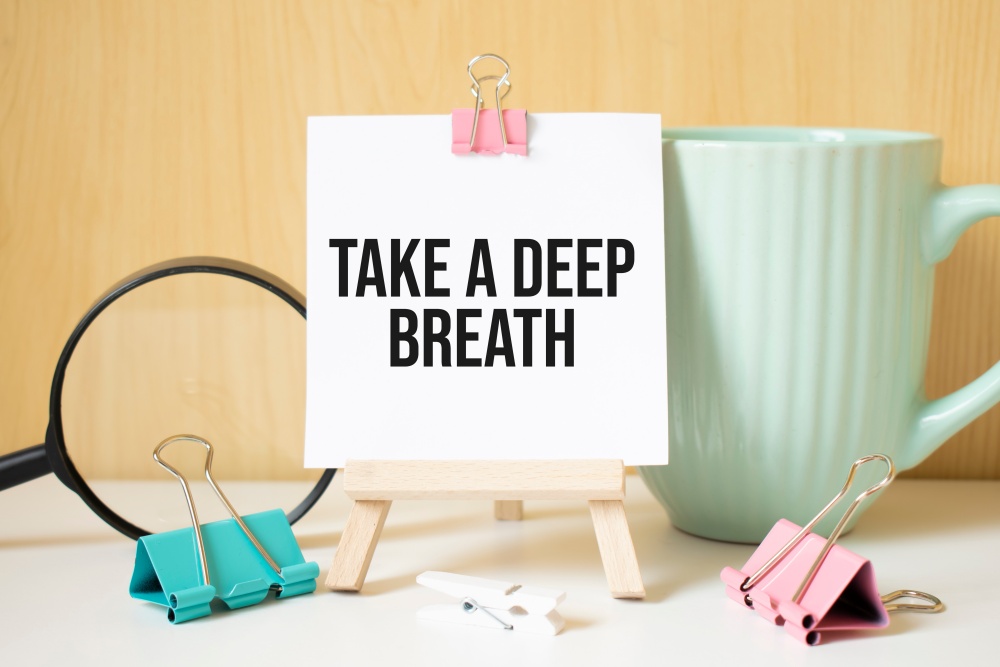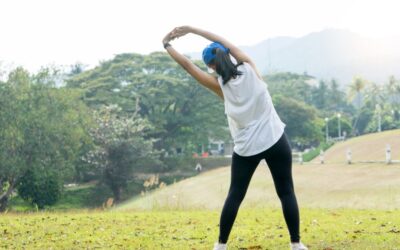What Is Breathwork? A Beginner’s Guide To Therapeutic Meditation
Breathing is automatic, unconscious, and involuntary. You do it without thinking, both when you’re awake and asleep. It’s what keeps you alive and functioning.
But you can also control your breathing if you put your mind to it.
Conscious breathing has been revered in Asian countries for thousands of years, beginning as early as 3000 B.C.E. in India! It is called “breathwork”, and it can do wonders to calm your mind and make you feel more grounded in times of stress.
Sounds incredible? Right? It’s because it is. I mean, common, who doesn’t want to feel more grounded and less stressed in this crazy world. Now, before you think this is some kind of “woo woo” stuff or you get an image in your head of some yogi sitting cross-legged, that is not what we will be talking about. You can do it anywhere, in any position. So stick around, to have your mind blown.
Breathwork offers many benefits, so if you’re looking for a meditative technique that can do wonders for your body, mind, and soul, here’s a guide to help you get started.
But First, What Exactly Is Breathwork?
To put it simply, breathwork makes your breath work.
Breathwork is an umbrella term used for techniques that use breath as a weapon. It’s a form of meditation that triggers body relaxation responses to root you in the present and enhance your physical, mental, emotional, and spiritual health.
What Does Breathwork Do?
Breathwork instills a sense of consciousness in the unconscious act of breathing.
It forces you to let go of the worries that haunt you when you lie in bed at night, helping you ace through the day with a clearer mindset and a positive outlook. It does a complete 180 on your sympathetic nervous system, moving your body from its “fight or flight” response to a state of calmness by grounding you in the present.
As to how it works its charm, breathing affects how much oxygen your cells get to satisfy their metabolic needs. So, when you control how you breathe, you influence the amount of oxygen you bring into the body and help your body thrive.
A Brief Look Into The Benefits Of Breathwork
Breathwork benefits are a dime a dozen, and research supports this. This excellent practice improves both physical and physiological health to enhance your quality of life, which it does by:
- Aiding emotion control by reducing symptoms of anxiety, depression, anger, and confusion and increasing comfort and relaxation.
- Decreasing symptoms of Post-Traumatic Stress Disorder (PTSD).
- Decreasing systolic and diastolic blood pressures and having a relaxing effect on those exhibiting prehypertensive or hypertensive symptoms.
- Distracting your brain to help you feel more connected to yourself and supporting a release of feelings and emotions to aid addiction recovery.
- Exerting positive effects on hyperventilation symptoms and lung function to mitigate asthma.
- Improving diaphragm function and dyspnea, among other symptoms, in Chronic Obstructive Pulmonary Disease (COPD).
- Improving glycemic control and mental well-being in patients with Type 2 Diabetes mellitus.
- Increasing parasympathetic drive and neuroendocrine release of hormones for a state of calm alertness in mental and physical disorders (stress-related).
- Increasing the pH of your blood to decrease the amount of CO2 and increase O2.
- Lowering the levels of cortisol (the stress hormone) in your body
- Modulating immune and stress responses.
- Reducing blood pressure in hypertensive patients.
- Suppressing inflammation.
What’s more? Giving your body time to rest and regain composure also produces melatonin, improving your sleep cycle.
Different Types Of Breathwork For Beginners
Among the many breathing techniques that can do you a world of good, these 3 are constantly ranked beginner-friendly because they are easy and effective.
Give them a try today; you can thank us later.
Alternate Nostril Breathing
This controlled breathing practice will balance your mind and body, with a 2019 study also showing that it can decelerate the heart rate and systolic and diastolic BP.
Here’s how you can get started with it:
- Sit comfortably with your legs crossed, preferably in a quiet place.
- Exhaling quietly, use your right thumb to close your right nostril, placing enough pressure on it to block the air.
- Inhale slowly using only the left nostril.
- Release your right thumb off your right nostril, but hold your breath as you switch sides, placing your right index or ring finger on the left nostril.
- Breathe out deeply through the open right nostril.
- Repeat the process, alternating between nostrils every time you exhale completely, 5 to 10 times.
Remember, no breath should escape or come through your mouth during this exercise!
4-7-8 Breath
This technique presses pause on your busy mind and grounds you to the present, also slowing the heart rate and stimulating the parasympathetic nervous system (PNS) to reduce symptoms of stress, also curbing anxiety and depression.
Here’s how you can get started with it:
- Make a whooshing sound to exhale all the air in your lungs through your mouth.
- Close your lips, breathing in silently through the nose for 4 beats.
- Hold your breath for 7 beats.
- Exhale through the mouth as you count from 1 to 8.
- Repeat for 4–5 cycles, but stop if you feel lightheaded.
Do this intermittent breath retention tactic whenever you feel stressed or overwhelmed, and watch how wonderfully it controls your fight or flight response.
Diaphragmatic Breathing
Also called deep breathing, this meditative technique works the diaphragm, which does 80% of the heavy lifting when you breathe in and out. It can improve your respiratory function, making the exchange of oxygen and carbon dioxide a breeze.
Here’s how you can get started with it:
- Sit down with your head and neck relaxed. You can also do this lying down, but use a pillow under your knees for support.
- Place one hand on your upper chest and one on your abdomen. This will help you feel how your diaphragm moves.
- Inhale slowly through your nose for about 4 seconds, feeling your abdomen move. It will make your bottom hand move, but you have to make sure the hand at the top is as still as humanly possible.
- Hold your breath for 2 seconds, tightening your stomach muscles.
- Exhale very slowly and steadily through pursed lips.
- Repeat this exercise for 5–10 minutes.
In Conclusion
Breathwork is a game changer for overall health, but it takes time to master.
So, don’t give up if you feel uncomfortable or cannot hold your fort down for the exercise. Persist, be patient and consistent, and you’ll soon see tangible results.
Spending Time in Nature: Benefits & How to Get Started
In the digital age, people are glued to their phones at all hours of the day. Factor in sedentary lifestyles, and we are damaging our mental and physical well-being. This is why we all need to get out—we mean this in the kindest way possible. Spend time outdoors,...
Decluttering: The Life-Changing Benefits of Tidying Up
One in 11 Americans have so many belongings that they have to pay a sweet $91.14 per month (on average) for storage space outside their homes. It’s not necessarily hoarding—sometimes, they just have difficulty parting with their prized possessions because of the...
Air Purifiers: Impact on health and disease
Our “environment” is one of many ways that it is possible to “leverage” health outcomes. In other words, decrease inflammation (correlated with many diseases) and optimize cell function. “Environmental air pollution has a direct impact on human health, being...
It’s True! Having a Sense of Agency Over One’s Health Can Increase Our Lifespan
Our resilience and it turns out—even our longevity—depends on having a sense of agency over one’s health. When we talk about a sense of agency, we’re referring to having a feeling of control over what happens to us. It’s important because it aids our mental stability,...
Drink Your Way To Good Health With BEAM’s Super Greens
Finding it hard to meet your body’s nutritional needs? You’re not alone. According to the Dietary Reference Intakes, a staggering 92% of Americans suffer from at least one vitamin or mineral deficiency. Deficiencies for most nutrition indicators could be as high as...
Grounding Mats: A Groundbreaking Way To Embrace Good Health
If you’ve ever walked barefoot on the earth, you might have felt recharged and reinvigorated. This sensation isn’t a mere coincidence. Instead, the positive effects we feel when we let our feet touch the Earth’s natural surface—an activity called grounding or...
What Can Blue Zone Residents Teach Us About Life, Health, and Longevity?
Today, we have more scientists, doctors, and nurses. There are also larger investments in healthcare and wellness, more experimental treatments, and more research papers than ever. And yet our world remains riddled with disease and health conditions. Consider that in...
The Miracle of Faith: How It Can Help You Live Longer
“Religion” gets criticized and mocked, but nobody (not even science) can deny it can be good for you. For starters, a study of more than 1,500 newspaper obituaries from across the U.S. shows it can help you live 9.45 years longer than non-spiritual folks. But this...
Looking at the Bright Side: How Optimism Can Help You Live a Longer, Healthier Life
Are you a glass-half-full kind of person? If you are, then you’ll love what this article has to say about its impacts on health. If you struggle to look at the brighter side of things, this could be a sign that it’s time for a change. According to a clinical...
What You Should Know About Sensorineural Hearing Loss
Hearing loss affects millions of people around the globe. According to the World Health Organization (WHO), it is experienced by almost 20% of the entire population! There are three types of hearing loss, but more than 90% are attributed to sensorineural hearing loss....











